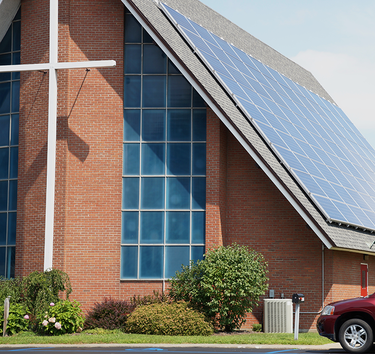Many people qualify for green-energy benefits without knowing it, NY League of Conservation Voters says
ALBANY COUNTY — As New Yorkers reel from inflationary pricing and extreme heat this month, the New York League of Conservation Voters is reminding some local residents that they can tackle both problems at once through the federal Inflation Reduction Act.
On Aug. 8, the league is giving a presentation at the Knox Town Board meeting about the act, one of several outreach events it has held since the law came into effect almost exactly a year ago.
To help promote energy efficiency — which in turn improves financial efficiency — the Inflation Reduction Act offers incentives for a wide variety of green technologies available to consumers, businesses, and municipalities.
Calling the act the “biggest, boldest” climate legislation in the country’s history, New York League of Conservation Voters Communications Director Devin Callahan told The Enterprise this week that “connecting consumers and the people who are going to benefit from this with opportunities for rebates and tax credits … is key.”
While acknowledging the immediate financial incentive for taking steps like buying an electric car or setting up solar panels, Callahan said that, coming off the hottest month ever recorded, the greater existential incentive for adopting these technologies is “not only top of mind [for people] right now, I think it is in their very bones, and they see it every single day.”
In addition to town hall presentations like the one in Knox and writing op-eds, the league has also published a series of guides to the various incentives granted by the Inflation Reduction Act.
Along with an overview guide, there are nine guides to specific IRA benefits involving:
— The Energy Efficiency Home Improvement Credit, which includes $1,200 for weatherization installations and upgrades, and $2,000 for heating and cooling sources;
— Utilities benefits by region;
— Clean vehicle credits, which include $4,000 on a used electric vehicle or up to $7,500 0ff a new one, plus $2,000 from the state toward a new electric vehicle;
— Funds for farmers “to plant cover crops, add trees that form windbreaks along their fields, and restore wetlands and riparian areas;”
— The Residential Clean Energy Tax Credit, which is a 30 percent tax credit for solar, geothermal, and battery systems;
— The HOMES Rebate Program, which offers up to $4,000 in rebates regardless of income for projects that contribute to a 35 percent energy cut, or $8,000 for low- and middle-income households;
— The High Efficiency Electric Home Rebate Program, which includes up to $14,000 in rebates for low- and middle-income households through the State Energy Office;
— State and city incentives, such as the state’s energy conservation improvements property tax credit; and
— Electric vehicle and infrastructure credits and rebates, which includes discounts on the purchase and installation of electric vehicle charging stations.
“A year into this, many people are still unaware of the benefits they could be eligible for,” Callahan said.
According to the Rhodium Group, a climate-focused think tank, the Inflation Reduction Act is expected to drastically reduce greenhouse gas emissions in the United States, particularly in the power and transportation sectors.
“The power sector in particular looks quite different in 2035 compared to today, with zero- and low-emitting power plants making up 63-87% of all generation that year, up from around 40% in 2022,” Rhodium says in a progress report published last month, that forecasts from a range of scenarios. “Electric vehicles also continue their rapid growth, and, taken together, this progress on decarbonization also reduces household energy bills by an average of $2,200-$2,400 per year in 2035 from 2022 levels.”
The report says that, in all scenarios, emissions reduction will be the most rapid over the next 10 years, before most Inflation Reduction Act provisions start to expire. Without any additional environmental policies, it projects the United States would meet its Paris Agreement goals in 2035 — five years past the deadline.
“There’s really no time to waste,” Callahan told The Enterprise.
The league will be giving another presentation on the Inflation Reduction Act benefits on Aug. 16 at 5:30 p.m. alongside Congressman Paul Tonko at the Albany Public Library Washington Ave. Branch in the city of Albany.
Callahan said that registration information will be made available on the social media pages of Tonko and the New York League of Conservation Voters.



